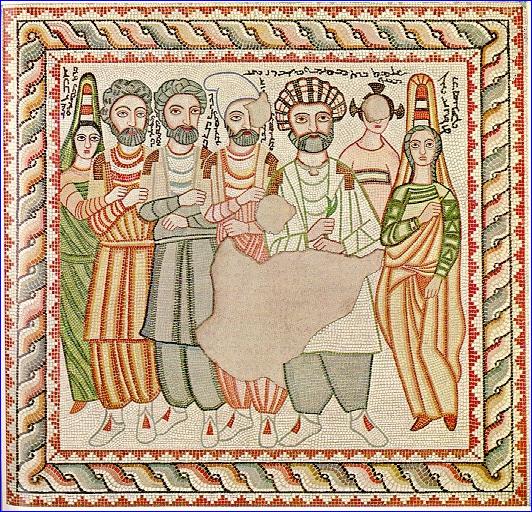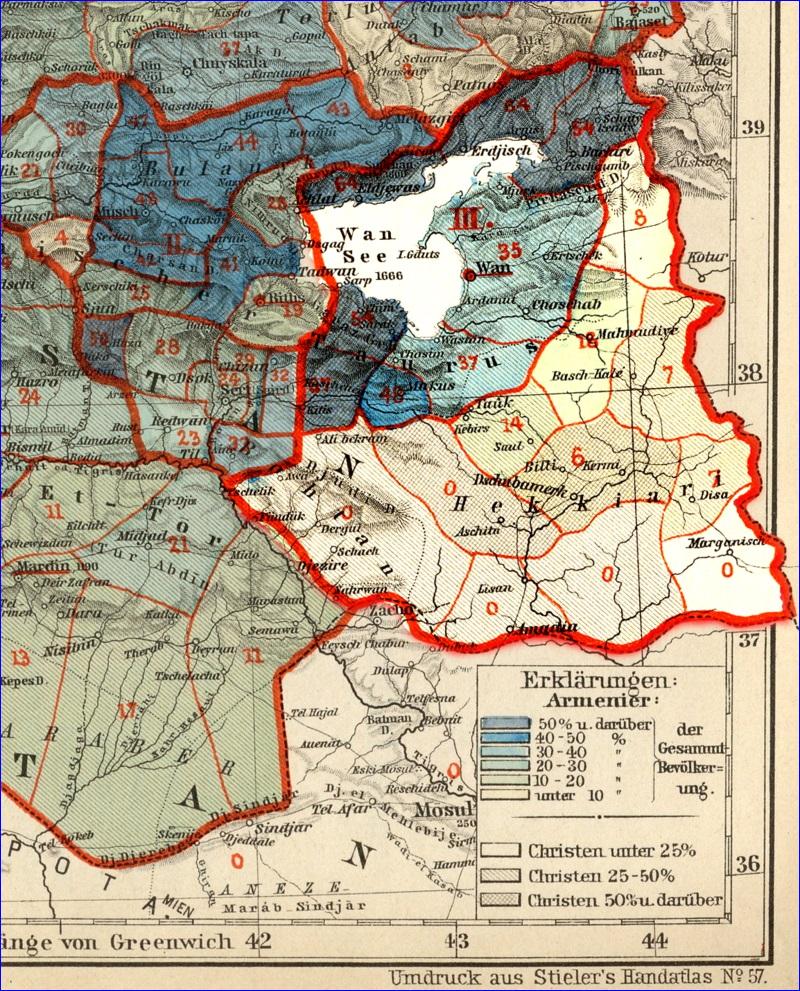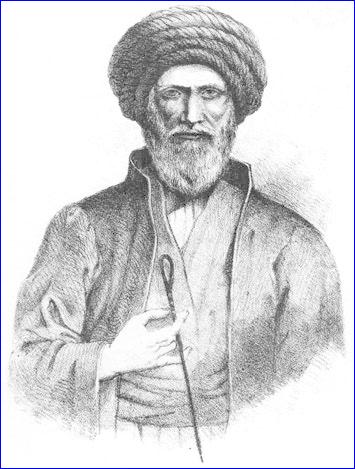


He begins with a brief introduction to the Assyrian people:
[Firstly], the name Assyrian refers to their ethnicity, whereas Syriac refers to their literary language and Christian heritage. Secondly, the name Nestorian refers to the Eastern Assyrians who adhered to the Church of the East, whereas Chaldean refers to those Assyrians who converted to Catholicism and split from the Church of the East beginning in the 16th century. Many names, but one people.
The Assyrians have an ancient history in Eastern Anatolia. This is attested in early Armenian history and folklore; for example, in the story of Hayk and King Belus that describes the founding of the Armenian nation and in the story of Assyrian queen Semiramis' founding of the city of Van (which came to be the capital of the Kingdom of Ararat). Armenians throughout history have also referred to Van as Shamiramakert ("Semiramis' city"). This is the same Semiramis who features in the story Ara the Handsome (Ara the Beautiful).
Following the ancient and critical presence of Assyrians in the region of Van, Al-Jeloo points to their various migrations to and from there in the Common Era. Of particular interest for this post is his description of the latest settlement of Assyrians in the 17th century, mainly in the province of Hakkari on the southern border of Van. Mar Shimun XVII Abraham (right) was himself from Hakkari.
For over 200 years (17th c. to 19th c.), Armenians and Assyrians peacefully coexisted in this region and to its east (e.g., near Urmia in Persia). It is worth noting that Raffi's wife Anna was Assyrian. We also have information from this online book from 1914 on the Assyrians of Van, which explains that Armenian women who married Assyrian men were not required to become Nestorian, “as [it was believed that] the Armenian Church is nearest to their own church."

Despite this peaceful coexistence, the Assyrians were already subject to Kurdish attacks soon after their 17th century resettlement:
...The oldest Assyrian manuscript [1] to survive from the Van region was copied in 1683 in a church in the village of Akhasim [Note: I thank Nicholas Al-Jeloo for clarifying the name of this village, which I was unable to decipher in the video. He notes that its present-day name is Ongun, that it is located about 20 miles to the east of Lake Van and is currently inhabited by Kurds]. A later note however mentions that the village had been attacked by Kurds and that the poverty-stricken inhabitants were forced to sell the manuscript to sell off their debts since no priests or readers remained and they were unable to maintain their church. By the first half of the 18th century, this manuscript had come into the possession of a church in Iran's Urmia region... It appears that the Assyrians of Van had strong links to the Assyrians of Iran...

Jalaleddin is set in the same location as in the above map, only about 20 years earlier, during the last Russo-Turkish War, when the Kurdish tribes of the region took to massacring the Ottoman Armenians.
But what about the Assyrians? They were in the same place, at the same time, weren’t they? Were they also massacred?
Here is Raffi's description, from Chapter 7:
He [Sarhat] met with a few priests and homeowners, and tried to convince them to arm the people to preempt the impending danger. [Sheikh] Jalaleddin was at that time just beginning his incursion, but barbarity had already ensued. Sarhat's appeal drew on the neighboring Assyrians of Jolamerk (Hakkari) who were armed and prepared, and did not allow the Kurds to take a single footstep onto their soil; the government was not able to force them to surrender their arms because they responded by saying that they must protect themselves when the government does not have the ability to do so.
From this excerpt, the Assyrians would seem to have successfully resisted. However, this is the only mention of Assyrians in the book. We were also unable to find any sources that describe whether the Assyrians were victim to these massacres during the Russo-Turkish War of 1877-1878.
Here’s our take:
Hakkari is over 100 miles south of Baskale and Catak, and shielded by highlands. Therefore, as Raffi describes, it seems likely that the Assyrians of Hakkari were able to resist, especially if they had sent word that they were armed and prepared to do so. That would have been a long journey and a difficult battle for the Kurds. However, given the destruction caused by the Kurds in the areas of Van, Baskale and Çatak (the points of the triangle in the map below), and the known Assyrian presence in the region, it seems likely that Assyrian villages in and even above the (shaded) area to the east of Lake Van were also destroyed.
It is not clear if this has been previously documented.
Thanks to a series of posts on the Assyrians of the Near East by @Extrachelle on Twitter, we discovered sources that detail earlier 19th century attacks on the Assyrians of the region.
In the first of these, Reverend Thomas Laurie reported [2] a Kurdish attack "to the Nestorian village of Seel, or Seer" in 1841. The historian Hirmis Aboona located this village in Aghbak (Baskale), which readers of Jalaleddin will recognize from the opening line of the book.
At the same time, another set of attacks was taking place in Hakkari. In his book, Assyrians, Kurds and Ottomans: Intercommunal Relations on the Periphery of the Ottoman Empire, Aboona cites the report of one James Brant, who was the British consul at Erzurum, and who "bore witness to the extent of the cruelty and oppression practiced against the Assyrians of the district or those of Tiyari [an Assyrian tribe in Hakkari] who were obliged to cross to other provinces."
He then cites a segment from Brant's report from 1841:
[t]he governor [...] is Kurdish and is depriving the Tiyari tribe from pasturing in that district. He executed 20 of them and demanded payments from the others. The Pasha of Mosul demanded their presence in his office and sent them to be detained in the Castle of [Amadiya] until they paid for their liberation. This [state of affairs] led the Tiyari tribes to take revenge on [the Kurds].
In the remainder of Chapter 10, Aboona details the 1843 massacres of the Assyrians of Hakkari by Kurdish tribes led by Bedr Khan Bey, who he argues was in cahoots with Ottoman officials.
With this post we wish recognize the Assyrian genocides. Although the Armenian Genocide of 1915 is widely recognized, many people are not aware that Assyrians were also massacred on a large scale in the same event, and (like other Ottoman Christians) on-and-off for more than 200 years preceding the start of the 20th century.
[1] He seems to be referring to The Book of Khudra, as described here by Robert DeKelaita, although the dates do not match.
[2] The report is from his book Dr. Grant and the Mountain Nestorians, published in 1853.

or register to post a comment.